The Gift of South Dakota
Subscriptions to South Dakota Magazine make great gifts!
Subscribe today — 1 year (6 issues) is just $29!
Badlands and Good People
Jun 16, 2015
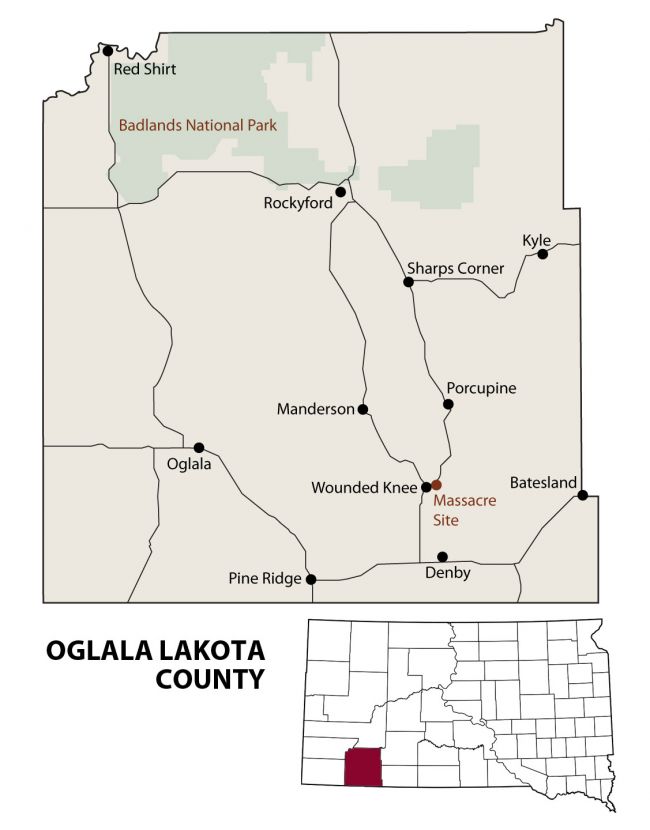 |
This place isn’t Shannon County any longer. That’s because the members of the Pine Ridge Indian Reservation didn’t want to live in a county named for a man complicit in the woes of their people. So they got out the vote and picked a new name, one more representative of the 13,500 people who live here. This is now Oglala Lakota County, and if you visit you’ll see the vibrant Lakota culture juxtaposed against places that tell the sometimes sad story of their past.
The county was formed from neighboring Fall River County in 1875 and named for Peter Shannon, chief justice of the Dakota Territorial Supreme Court from 1873 to 1881. After his judicial career, Shannon found his way onto a committee with former Gov. Newton Edmunds and James Teller, of Ohio, to negotiate land sales with tribes on the Great Sioux Reservation west of the Missouri River. They endeavored to acquire 11 million acres. In return the government promised 25,000 cows and 1,000 bulls to be divided across the remaining reservation land.
“The commission had to obtain 3/4 of adult male signatures per tribe,” says Jesse Short Bull, who helped lead the name-changing effort. “It was not a popular concept. The interpreter, Samuel D. Hinman, was accused of intimidating people to sign or face military removal. Hinman also acquired signatures from children as young as 5 years old at area day schools on the Pine Ridge Agency.”
It took the efforts of two more commissions before the signatures were finally obtained and the land transferred. Short Bull says it seems like Shannon was the odd man out on the commission, but he nevertheless played a role in shaping Lakota life. “When you think of the line of incompetent military officers to ill prepared Indian agents that the tribes had to deal with, Shannon was not in their category. He was a smart man, and vowed no wrong doing on his part when the Edmunds Commission was being questioned. With that being said, he was still part of the driving force that changed the course of history for the tribes and everything that came with that — the breakdown of Lakota culture and the introduction to a new way of life.”
So after 140 years of the Shannon name, the issue was placed on the November 2014 general election ballot. Residents voted overwhelmingly (2,161-526) for the change. After several legislative formalities, Shannon County officially became Oglala Lakota County.
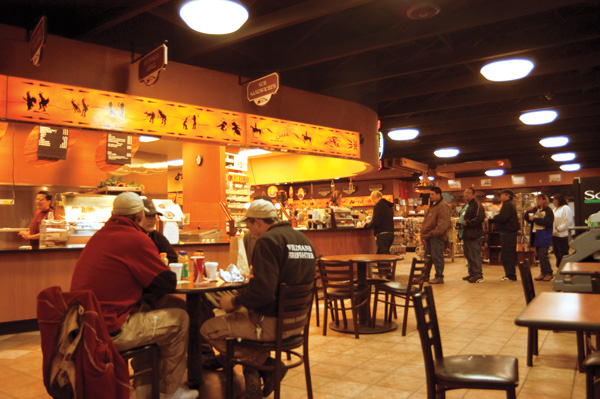 |
| Big Bat's is the busiest gathering place in Pine Ridge. |
The county contains the Pine Ridge Reservation, home to the Oglala Lakota Nation. It’s consistently ranked among the poorest counties in the nation, but there are bright spots. Mark Tilsen and Karlene Hunter created Native American Natural Foods in 2005. Headquartered in Kyle, they produce the Tanka Bar, a mix of cranberries and ground bison modeled after a traditional food called wasna. They began the venture with four employees, but now 16 people work on various Tanka products including Tanka Dogs, Tanka Bites and Tanka Wild, a derivation of the buffalo and cranberry bar that includes wild rice.
You can’t pass through Pine Ridge, the county’s largest city, without a stop at Big Bat’s. Sure, you can get gas, oil and junk food at this convenience store, but its walls also contain art by Lakota artists like Donald Montileaux. A fire devastated the store in 2001, but Bat and Patty Pourier invested $1 million and rebuilt the busiest gathering place in town.
You can find even more art inside The Heritage Center at the Red Cloud Indian School. Its annual summertime art show runs through Aug. 9 and features more than 50 Native artists each year.
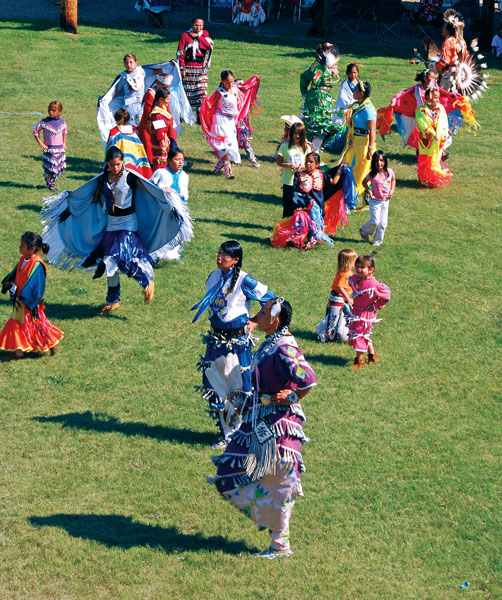 |
| Pow wows feature dancers in brightly colored regalia. They dance in several categories, including traditional, fancy and grass. |
Summer is also pow wow season on South Dakota’s reservations. They feature men and women in traditional regalia dancing to the beat of the drum. Oglala Lakota College’s Graduation Wacipi is June 19-21 in Kyle, and the annual Oglala Lakota Nation Wacipi Rodeo and Fair is July 30-Aug. 2 in Pine Ridge.
If you want to explore nature and are up for rugged adventure, the Stronghold Unit of the Badlands National Park lies in the northern part of the county. Most travelers zooming across South Dakota on Interstate 90 only see the Badlands from a loop that runs south of Wall. The Stronghold is less developed and contains a mix of parkland and private land. Its 133,000 acres of rugged badlands and mixed grass prairie was used as an aerial gunnery range during World War II. It was added to the park in 1976.
Paved roads are few and far between in the Stronghold, but they are nonexistent in an even more remote section of the Badlands called the Palmer Creek Unit. It’s nearly inaccessible for vehicles and surrounded by private land. Only exploration on foot is recommended, but you must seek permission from landowners before crossing their land on the way to Palmer Creek.
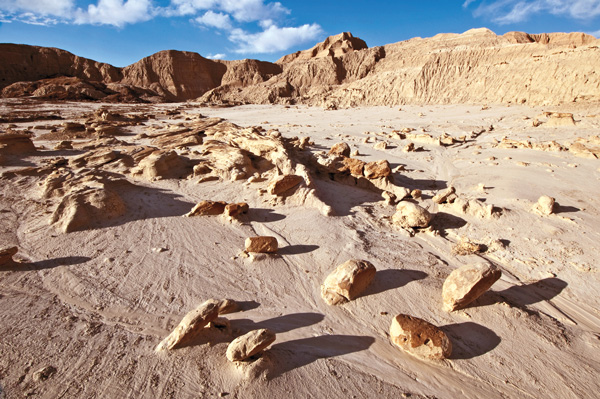 |
| Oglala Lakota County contains two remote regions of the Badlands. Photo by Carl Johnson. |
One of the most visited spots in Oglala Lakota County is the Wounded Knee Massacre Site northeast of Pine Ridge. This is where, in December 1890, 300 men, women and children belonging to Big Foot’s band of Lakota died at the hands of the Seventh Cavalry. They are buried here in a mass grave.
It’s a sad chapter that people here will never forget, but with entrepreneurs like the Pouriers, Tilsen and Hunter the future is bright. After all, if you can change the name of your county then anything seems possible.
Editor’s Note: This is the fourth installment in an ongoing series featuring South Dakota’s 66 counties. Click here for previous articles.




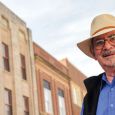
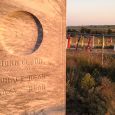
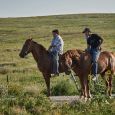



Comments